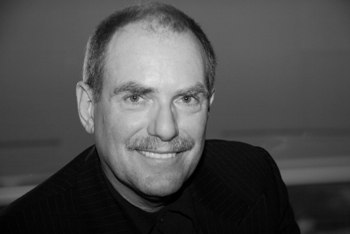Tiananmen Square and Technology

It was 20 years ago this week that the demonstrations in Tiananmen Square turned violent. After days of open demonstrations, the Chinese government had had enough and sent in the army. This led to one of the most iconic visual images of protest in recent decades: a single man standing right in front of four tanks, daring them to run him over.
The image is one that anyone over the age of 35 can remember as it flashed around the world, and represented the individual facing down superior force in a literal stand for freedom. It was this image that gave the communist Chinese government its first taste of international outrage as it was slowly moving toward a more open, capitalistic society. It was a government and a country unused to global scrutiny. While the crackdown on protestors continued, it was done quietly and out of camera range of foreigners and journalists. A single image had flashed around the world and had left an indelible mark on human consciousness.
One of the dynamics that led this single man to stand in front of the tanks was the impact of technology. When the government moved to end the demonstrations, it blocked all known communications channels, isolating the demonstrators. International TV and radio was jammed so the demonstrators had no idea whether there was support for them around the world. One thing the government missed was the new communications technology called the fax machine. Evidently in offices near Tiananmen Square and in universities there were fax machines. They were used by demonstrators to get the word out to the world. Much more importantly, the world responded, sending faxes by the hundreds, letting the demonstrators know that the whole world was watching. This is what gave the demonstrators strength. This is what emboldened the young man to stand in front of the tanks.
Fax technology was just a few years old in 1989. The fax machine first entered the office in the mid 1980s and didn't make it into the home until the 1990s. It was this brand new technology of sending documents through phone lines that fueled the demonstrations. There were only a few million cell phones in the world in 1989, and certainly none available for the demonstrators at Tiananmen Square. So it was the fax machine using land lines that kept hope alive in Beijing.
What is striking is how much transformation in communications technology humanity has experienced in the 20 years since 1989. In 1995 there were 89 million cell phone subscribers in the world, in 2005 there were 2 billion, and today there are 4 billion! In 1995, the year the first commercial browser came to market, there were some 45 million people using the Internet. By 2005 that number had crossed 1 billion and there are close to 2 billion today. Cable and satellite TV was still in early stage growth in 1989, today they are global in reach. In 1989, the few laptops in the world were large, bulky and heavy and there weren't very many of them.
Humanity is more globally connected than it has ever been. Terrorist attacks are caught on cell phone cameras and telecast to the world. Network news anchors speak live via videophone to correspondents anywhere in the world. Internet services such as Skype allow us all to cheaply communicate globally via video. Bandwidth expansion and data compression are such that a month's worth of videos from YouTube equals what coursed through the Internet the entire year of 2000. We are constantly connected.
Communications technology may now provide us with more information than can possibly be absorbed and digested. The electronic feed trough of information is always on, and this can feel overwhelming. We move from the delight in access and availability to the desire to totally unplug. The good news for freedom and openness is that, with each technological step forward, barriers fall, dictators' control lessens, ignorance decreases and people can take ever more informed actions.
The fax technology of 1989 provided the demonstrators with the knowledge that the whole world was watching, allowing one man to take an informed action that single-handedly stopped a phalanx of tanks. That was 20 years ago this week. How far we have traveled since then.
David Houle is a futurist, strategist and speaker. He has always been slightly ahead the curve. Houle spent more than 20 years in media and entertainment. David can be contacted at David@DavidHoule.com.


